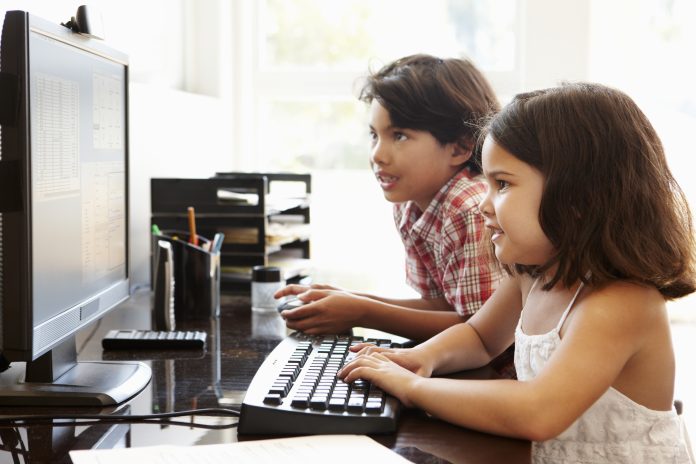David McCarthy, Director of Education at Sophia Technologies, offers insight into how the internet can help develop and keep children safe, whilst highlighting what we should be wary of and what can be done to raise awareness
When one talks about technology and the impact it has on the young, one can look no further than the impact the internet and social media has had on children today. For parents and education staff, it is often difficult to have a balanced view. While there’s a positive narrative here, media headlines are often quick to point the finger of blame at technology for a host of wider problems: from ever-increasing violence, drug use, cyber-bullying and self-harm, to obesity amongst students.
Figures produced by Ofcom indicated that 70% of twelve to fifteen-year-olds have a profile on social media, while the OECD reported in 2015 that 94.8% of fifteen-year-olds in the UK used social media sites before or after school. This has led to ever-increasing debates about the advantages and disadvantages of modern technology.
Obesity, mental disorders, hate speech, fake news
Newspaper headlines have plagued us with how unhealthy our children are. The House of Commons Report stated that “physical inactivity is unlikely to be a direct consequence of adolescents spending too much time on screen-based activities, but rather suggests that already-inactive adolescents have more time to spend in front of screens”. In the ever-increasing hectic world that we live in, may I suggest, two main reasons students are turning to their screens are because they are bored and they lack actual human connections. Parents and guardians have ever-increasing busy lives, and by the time they come back home late evening – have prepared meals and readied the family for the next day ahead – they have little quality time left in the bank to spend time with their children, let alone participate in physical activities. Added to this problem is the fact that many government-owned playfields have been sold and families have often nowhere to go and play in a competitive sport, even if they had the time. With free-to-use facilities diminishing, and sport becoming significantly undervalued, students are going to find it harder than ever before to lose weight.
Some of the most recent data on the issue of mental disorder comes from NHS Digital’s survey of the Mental health of children and young people in England, published in November 2018. This makes for a rather alarming read. It found that eleven to nineteen years-olds with a “mental disorder” were more likely to use social media every day (87.3%) than those without a disorder (77%) and were also more likely to be on social media for longer. However, these statistics do not provide the direction of the relationship; they are only indicators of an association.
What frightens most parents is what their children are being exposed to on the internet and via social media. The UK Safer Internet Centre cited its 2016 report, based on a survey with 1,500 thirteen to eighteen-year-olds, in which 82% said they had witnessed ‘online hate’ — that they had “seen or heard offensive, mean or threatening behaviour targeted at or about someone based on their race, religion, disability, gender, sexual orientation or transgender identity”.
Then we have cyberbullying in many forms: from name-calling or being mean online; to posting embarrassing photos or videos of others without their permission, to sending ‘sexting’ requests for pictures or videos, to deleting someone from a group chat, to creating a fake profile to damage another’s reputation; and to cyberstalking. All issues I had to face as part of the safeguarding team in my last school.
The list just goes on and on. However, it is important to be balanced; the internet and social media have brought students a plethora of advantages. Having discussed this with my four sons in a heated debate around the dining table, we came up with the following.
Connections, advice, freedom and more education
In the recent PISA (Programme for International Student Assessment) study that fifteen-year-olds took part in, 90.5% of boys and 92.3% of girls in the UK agreed with the statement that “it is very useful to have social media networks on the Internet”. Most teenagers enjoy staying in contact with members of their family who live abroad and also students from their school and other schools. They said that it was only through on-line communication they felt that they could express their feelings and thoughts and be able to be more open and honest.
Young students are becoming more actively involved in politics. The internet and social media give them access to political discourse and differing political opinions. This is very important, as so few teenagers watch the news on television or read printed newspapers. Undoubtedly, this generation has become the most connected of all time. In an ever-changing political landscape, students are more switched on into today’s key political issues, such as the environment, racism, sexism, etc. They are certainly more in tune with people of all different backgrounds.
Whilst, as described above, the screens often get blamed for obesity among children, the benefit of the internet and social media is also in the provision of health advice. The Royal Society for Public Health (RSPH) has found that young people rated YouTube positively “in terms of providing access to health information, awareness of other people’s health and wellbeing issues” and delivering “emotional support”.
Most students today use the internet to learn and exchange ideas. You can now enhance your knowledge about any field. Regardless of your location and education background, you can educate yourself, without paying for it. Sharing creative projects, such as blogs, vlogs and podcasts, can also help improve the mental health of young people – something that is at an all-time high. The Children’s Society also cites that the potential for social media to empower young people with disabilities, through promoting “a sense of belonging, identity and community” is vitally crucial to their emotional development.
What can we do better?
I could go on listing the advantages and disadvantages the internet has on children. However, if I was pushed to answer the question: ‘is the internet our friend?’ I would have to answer ‘yes’. Overall, the advantages override the disadvantages. The internet is here to stay. No one can get in the way of technological advancement. What we have to acknowledge is that there is a price to pay for all this technology. We need to highlight alarming issues and put into place processes which can help overcome these problems.
A good start would be to put more pressure on the technology and social media industries. They have, for far too long, had it their own way. From paying hardly any tax to their lack of ‘parental responsibility’ to the young, to their lack of cooperation with the police. Whilst I am the first to acknowledge the importance of privacy, I do believe that if someone has broken the law in a serious way, then they should not hide behind the privacy laws of social media sites, nor should they be allowed to by these social media sites. Perhaps the tax generated from these companies could be spent on education and the NHS in tackling some of the more negative aspects of the internet and social media.
As Tony Blair stated “education, education, education” is the bedrock of any progressive society. More money could be spent on training teachers and E-Safety officers on the problems associated with the internet and social media. Alongside parents, students need to understand the pitfalls of modern technology and realise there are consequences to their behaviours.
More money could be spent on recruiting professional safeguarding and welfare teams in schools; where, hopefully, they could spot the early stages of any psychological or physical problem a student may have. They could show students in much greater depth how to comport themselves online and how to distinguish fact from fiction (fake news, fake images, etc).
More money could be spent on promoting the advantages of sports and exercises.
More pressure could be put on the Education Department outlining the need for more time given to sport in schools and, indeed, make this a vital part of the school’s curriculum.
In conclusion, technology is a great thing – look how far we have advanced in simply a hundred years. It is how we use the internet and social media that will finally define the e-safety of children and the future of education.











